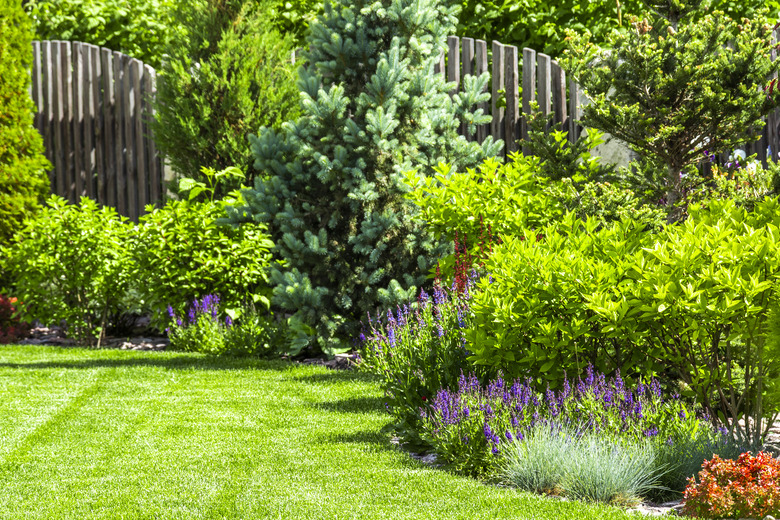The Best Weed Killer For Saint Augustine Lawns
We may receive a commission on purchases made from links.
St. Augustine (Stenotaphrum secundatum) is a popular warm-season turfgrass that stands up to heat, humidity and salt. It's hardy in U.S. Department of Agriculture plant hardiness zones 8 through 10, and its wide green blades form a dense mat, resulting in a lush, attractive lawn. Proper maintenance, like mowing and irrigation, is the easiest way to achieve a weed-free lawn. However, if weeds happen, then due to St. Augustine's sensitivity to certain chemicals, you'll need to use an herbicidal product that the grass tolerates and won't damage your lawn.
Tips for Weed-Free Lawns
Tips for Weed-Free Lawns
St. Augustine's dense growth habit usually keeps weeds away. Further, when this turfgrass is correctly maintained, weeds usually aren't a big problem. The sod forms thick mats that usually choke out most weeds so they can't get a grip in the soil to grow. However, if the turfgrass isn't properly maintained, it can become sparse, allowing bare openings for weeds to take root. When this happens, there's usually too much growth for manual removal to be successful. The best and easiest way to deal with the weedy problem is to reach for an appropriate herbicide.
St. Augustine requires mowing at heights between 2.5 to 4 inches, with grass located in shade mowed at heights of 3 to 4 inches and growth in sunnier areas at heights of 2.5 to 3 inches. Because you shouldn't let the grass grow more than 4 inches tall, expect to mow weekly during the growing season. During winter, mowing may stretch to every four weeks. Irrigate deeply when the grass blades start turning blue and begin folding, showing the need for water. Depending on environmental factors, you may have to water several times weekly when conditions are hot and dry.
Pre-Emergence Herbicide Use
Pre-Emergence Herbicide Use
Pre-emergence herbicides treat weeds before they spring to life and are best applied in late winter or early spring. St. Augustine grass is very sensitive to products containing 2, 4-D and MSMA. These types of herbicides can damage turfgrass, so be sure to read the product label thoroughly on what it contains as well as mixing and application instructions. Don't apply any type of herbicide if the grass is stressed from lack of water. Make sure the turfgrass is thoroughly watered the day before application.
Some pre-emergent chemicals safe for use on St. Augustine include atrazine, benefin and dithiopyr. Since too much water can dilute the herbicide, making it less effective, use the product in pump-up sprayers and not with hose-end sprayers. For example, one product containing atrazine recommends using 4 1/3 ounces per 1 gallon of water to treat an area of 500 square feet. Don't apply during a windy or rainy day, wear safety goggles and wash your hands after use.
Post-Emergence Herbicide Use
Post-Emergence
Herbicide Use
Post-emergence herbicides treat weeds after they've taken root. Some chemicals safe for use on St. Augustine include atrazine, dicamba and carfentrazone. As with pre-emergence types, the turfgrass is sensitive to a host of products in herbicides, so be sure to read the label and its contents carefully. Always follow label instructions concerning mixing, amounts and application as well as any safety precautions. Don't mow the grass before applying and make sure it's thoroughly watered the day before applying.
If you applied a pre-emergence herbicide early in the season, you probably won't have to use a post-emergence type until summer. Like with pre-emergence types, it's best to use a pump-up sprayer to apply the product. For example, one product containing dicamba suggests using 3/4 ounces per every 1 gallon of water to treat an area of 500 square feet. Don't apply during windy or rainy conditions when the product can drift to desirable plants or become diluted. Avoid using dicamba on 'Floratam' or 'Bitterblue' cultivars to prevent injury to these types of St. Augustine grasses.
